In 1881, Charles and Caroline Ingalls went to a 25th high school reunion. At least, they did on the TV series Little House on the Prairie.
As a 10-year-old, I remember watching that episode, called, “Whatever Happened to the Class of ’56?,” and finding it incredibly dreary. Most. Boring. Episode. Ever.
It was 1980 when it came out, and the kid characters, like Laura and Mary, were barely seen in the episode, and I simply wasn’t interested in the stories of a bunch of random adults in the 1800s – that is, former adult classmates of Caroline’s and Charles's who the audience had never seen before, and as it turned out, never would again.
But I’ve always kind of wondered and recently started wondering – how realistic was that episode? Were high school reunions being held way back in 1881? And if not, when did high school reunions start becoming a thing? In other words, was it really likely that Caroline and Charles, at least on the show, would go to a high school reunion? Did they in real life?
So I thought that might be an interesting post for The TV Professor. We’ll see if I’m right.
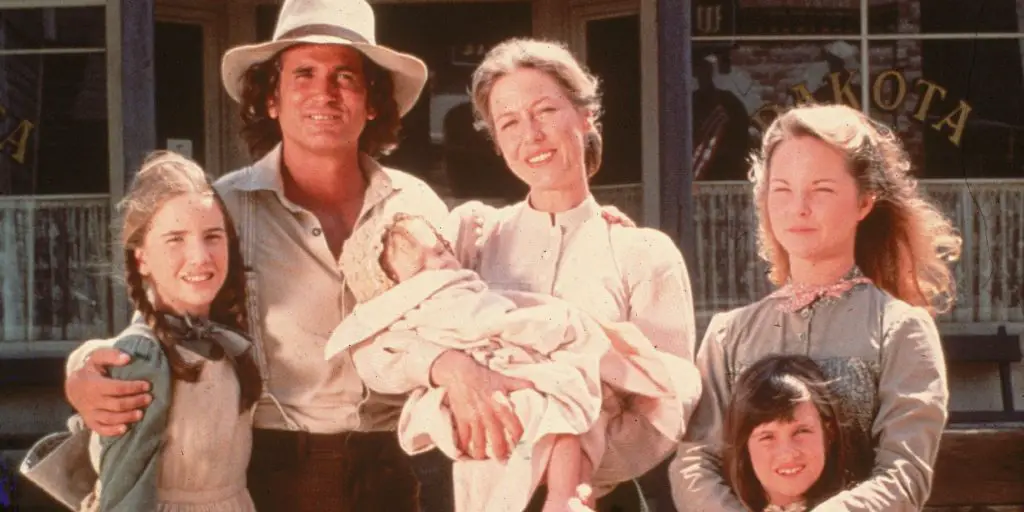
A Little About the Episode, “Whatever Happened to the Class of ’56?”
In a nutshell, the farmers of Walnut Grove decided to join a national co-op (geez, no wonder as a 10-year-old I was bored) called The National Grange.
As Charles puts its, the farmers all have to decide if they want to go along with the National Grange’s proposal “to set up a nationwide organization that would deal directly with the manufacturers and cut out the middleman and the retailers.”
Naturally, everybody votes that Charles Ingalls should be sent to the regional convention in Milwaukee.
So Charles tells Caroline that he’s going to Milwaukee – and she’s going with him. Grange is picking up all the expenses. Charles says, “You know Albert and Half-Pint can take care of everything while we’re gone.”
“Well, sure we can, Ma,” Laura says. “We’ve done it before.”
So the Ingalls figure out a few more family logistics (their friends, the Garveys, will take care of Grace), and Charles suddenly remembers that Caroline has some mail.
“Got a letter for you right here, from Dillon Hyde,” Charles says. (He looks a little pained, like he is thinking, “Remember this twit?”)
“Dillon Hyde?” Caroline says. “I haven’t seen him since the day he went to college?”
“Who’s Dillon Hyde, Ma?” Albert asks.
“Oh, just the grand master of the National Grange, that’s all,” Caroline says. “He was the richest boy in Concord. Or rather, his father was.”
(Caroline is speaking of Concord, Wisconsin, where she – the fictional Caroline and the real Caroline – grew up.)
“Handsome, too,” Caroline adds, and we see a sort of stunned and sad look from Charles. “All the girls had eyes for him.”
“You, too, Ma?” Laura asks.
“Oh, no, Laura. Your father was much handsomer. I only had eyes for him.”
Phew, marital crisis averted. Charles looks relieved.
So Caroline opens the letter, and wow, talk about your coincidences -- inside is an invitation to the 25th reunion party of the class of 1856, which will be held in Milwaukee, on the last day of the Grange convention. Well, that’s all very convenient for the scriptwriters.
I shouldn’t make too much fun of the script. It’s a sweet episode, one I wasn't able to fully appreciate when I was 10, and you really see how much Charles and Caroline care for each other (as if it wasn’t already crystal clear at this point in the show).
Anyway, there's an amusing little dust-up with Mrs. Oleson (so what else is new?), and then Caroline and Charles go to the reunion, traveling by train, and they discuss Dillon Hyde.
“I wonder if Dillon’s changed much,” Caroline says.
“I doubt it,” Charles says. “He’s probably as big a pain in the butt as he ever was.”
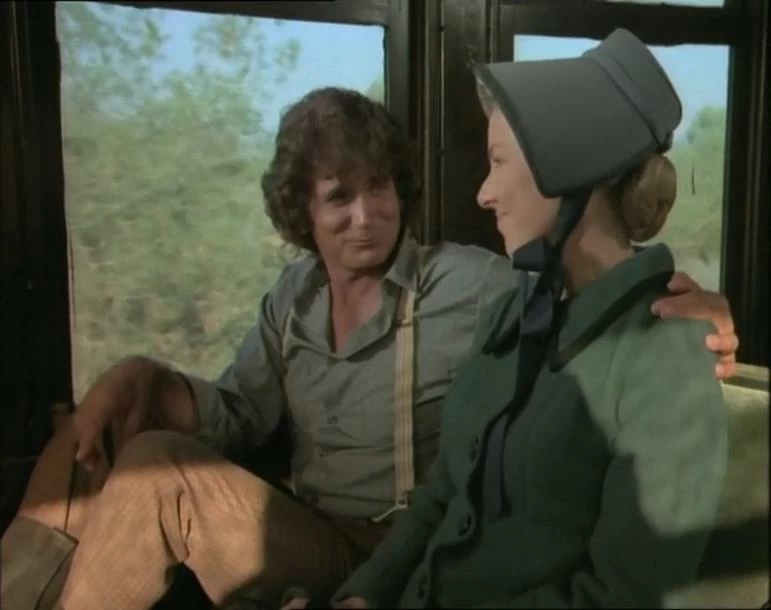
So, long story made much shorter, the Ingalls meet up with their classmates and come to realize that their rich classmates aren’t nearly as rich as they are.
At one point, Amy Phillips, an attractive and unhappily married classmate, tells Charles while fondling one of his hands, “You have nice hands. Gentle but strong. I like that. So strong.”
“That’s from shoveling manure,” Charles tells her. He thankfully and not surprisingly doesn’t seem in the least bit tempted to ditch his wife. He looks like he pities Amy.
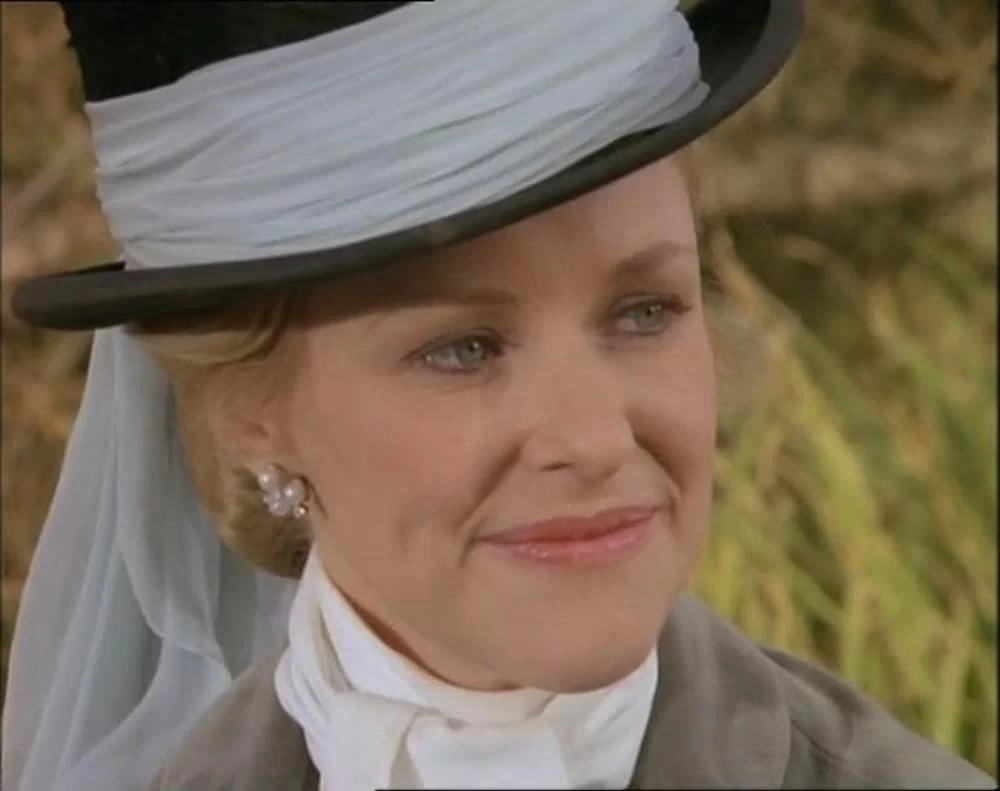
And, of course, as we figure will happen, Dillon Hyde propositions Caroline. He isn’t subtle about it. “I’d like to show you the high spots, just the two of us,” he says, getting closer to her in his carriage.
Caroline cringes. Her classmate isn't the classy guy she thought he was. Caroline shuts any thoughts down of an illicit affair.
“You know, Dillon," she says. "Charles was right. You are a pain in the butt."
When the Ingalls are back at their hotel, Charles delivers a heartfelt speech in their room, where he tells Caroline, “I love you. I mean, I really love you. And without you, I’m nothing. You hear me?”
In fact, he proposes to her again. Watching it now, I’m choked up. Back when I was 10, I guess I was gagging... or half asleep by now.
After that tender scene, there’s more farmers convention co-op talk, and then the actual reunion, which is a toxic stew of adult regret and repressed anger. Dillon Hyde is drunk and tries to dance with Caroline, but Charles won’t allow it. Irritable and intoxicated, Dillon then proceeds to tell off a couple people. He also decks a fellow classmate. He also slaps his aggrieved wife, and then Charles sends a fist into Dillon’s stomach.
Charles and Caroline are more than happy to leave the high school reunion. A train ride and stagecoach ride later, they arrive back to their farm.
As Charles says to Caroline when they see Laura, Albert, Carrie and Grace running to see them, “I want to tell you, if that’s not successful, I don’t know what is.”
So, yes, it’s a very nice episode, and after watching it again at age 51 and having been through a few high school reunions of my own now, I have a newfound appreciation for “Whatever Happened to the Class of ’56?”. In fact, I really like this episode now. But for a 10-year-old kid, it was a snore fest.
So how realistic was it that Charles and Caroline would go back to a high school reunion in 1881?
Actually, I’m happy and a little surprised to say, it was actually pretty realistic. It was at least within the realm of possibility.
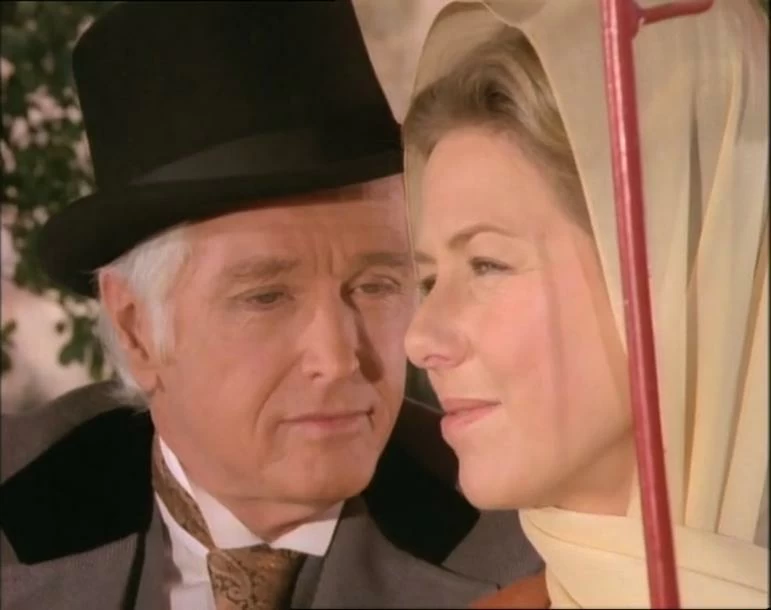
But, First, a Few Quick Thoughts on Little House on the Prairie and Its Take on History
I’m a big Little House on the Prairie fan, though I haven’t watched a lot of it in recent years. I need to rectify that. But, anyway, as fans of the Little House books and series likely know, the TV show took a lot of liberties with the truth.
Albert, the orphan boy the family meets when they briefly move (for several episodes) to the big city of Winoka, never existed in real life.
(Or as I like to tell myself when I watch the show, “No, of course Albert was real. It’s just that historians who have combed through the real Ingalls’ lives haven’t found evidence of that yet, and the real Laura Ingalls didn’t write about him in the books because Albert was shy. But, yeah, he existed.”)
James and Cassandra, the two kids that the Ingalls later adopted, also were not actual historical figures.
(Or as I like to tell myself when I watch the show… OK, well, never mind. You get the idea.)
Still, as authentic a portrayal of life on the prairie that I would like to think Little House on the Prairie is, the moment I really just shook my head and almost lost my mind was near the end of the series, in an episode called, “Wave of the Future,” where Mrs. Oleson decides that Nellie’s restaurant should become part of a franchise. That plot line was crazy enough (franchised restaurants didn’t come around until 1922, when A&W opened its second root beer stand; the first opened in 1919), but near the end of the episode, a guy who looked like Colonel Harland Sanders of Kentucky Fried Chicken shows up.
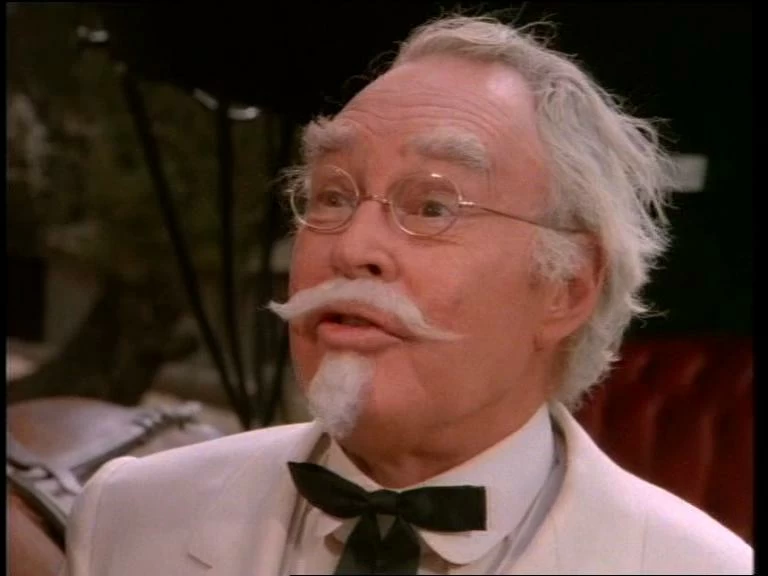
I was 11 years old when that episode aired but knew full well that Little House on the Prairie had just entered The Twilight Zone. Sanders wouldn’t be born until 1890. Kentucky Fried Chicken didn’t open up until 1952.
(Still, when I see the episode, I just tell myself this guy we’re seeing is actually Harland Sanders grandfather, who was starting a chicken restaurant business, but it never got off the ground... or maybe this episode was all a dream of Mrs. Oleson.)
All of this is to say that when I started doing research on the history of high school reunions and the historical accuracy of Little House on the Prairie, I didn’t have high hopes.
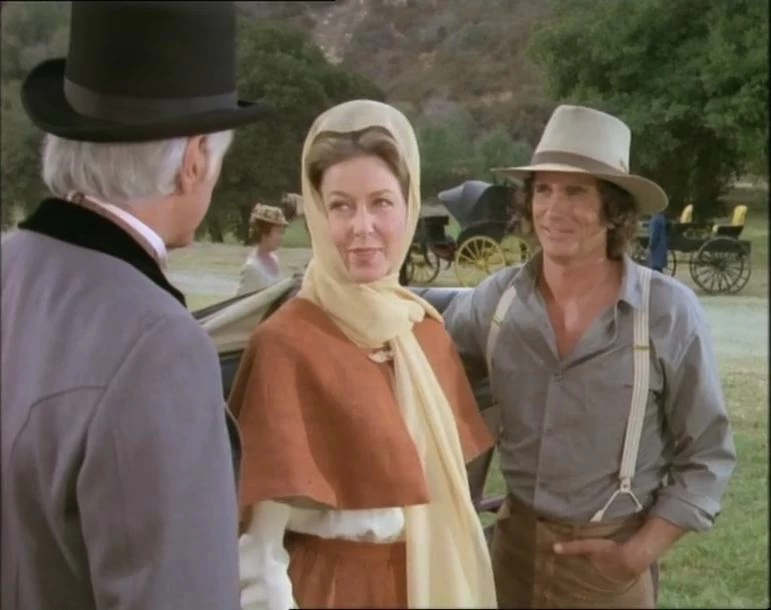
A Short History of High School Reunions
The first high school in America was in 1821, in Boston. There had been public schools in America since 1635 (also in Boston), but the first actual public high school was The English High School, with 101 boys enrolled. Because, you know, girls, why would they need an education? (Yes, I'm being facetious.)
According to the book A Room Full of Mirrors: High School Reunions in Middle America by Keiko Ikeda, in 1870, there were only 160 high schools in the country. By 1890, the number had jumped to 6,005. By 1932, there were 22,237. So you get the idea. There were not a lot of high schools in the country at the time when Little House on the Prairie was set.
That said, high schools existed – and so did high school reunions.
As for when they actually started, here’s a quick timeline of some milestones in early high school reunion history.
1854. The first high school reunions may have been inspired by Sunday school reunions. For instance, The New York Times reported a "Sunday school reunion" at the Sands-street Methodist Episcopal Church. The article mentioned that this Sunday school had been organized in 1815 – and now, 39 years later, some of the founders (those who were still alive) along with former teachers and students were brought back to discuss the history of the church’s Sunday school. As the New York Times wrote, "They at first met with much opposition, some of the people thinking it preposterous and wicked--the idea of teaching children on Sunday; but they thought it worse to let them go untaught, so they struggled on, and sent invitations to the different denominations in Brooklyn to send their children to their School."
1861. The Chicago High School held its third annual reunion. It isn’t quite clear to me if it was the third high school reunion in a row – probably – or if the class of 1858 was getting together three years later to discuss old times. That said, it was probably an annual event for anybody who had graduated from the school, which had just opened in 1856. This was Chicago’s first high school.
1866. The island of Nantucket – in Massachusetts – held a high school reunion for the former students of Nantucket High School. Former teachers came as well. This may have been the high school reunion that sort of set the template of what high school reunions are today. There was a band from Boston, and a banquet was held under a tent... The Boston Daily Advertiser described the tent "as beautifully adorned as flags, streamers, evergreens and flowers could make it. Over the entrance was an arch, bearing the inscription, 'Alma Mater greets you.’”
In general, throughout the 1860s and 1870s, the newspapers of the time had dozens of stories about high school reunions, Sunday school reunions and grammar school reunions (plenty of schools during this time were not full of high schoolers but of grades 1-12). For instance, in 1875, The New York Times reported that the Forsyth Street Grammar School held a reunion and that 302 people who graduated from the school from 1859 to 1871 were present.
But these get-togethers weren’t just happening in New York City, Boston, Chicago… you could find high school reunions in communities like Cleveland and Hannibal, Missouri. Once the trend of high school reunions caught on, it really caught on.
So in 1881, when Caroline Ingalls received an invitation to her 25th high school reunion, was that plausible? Absolutely.
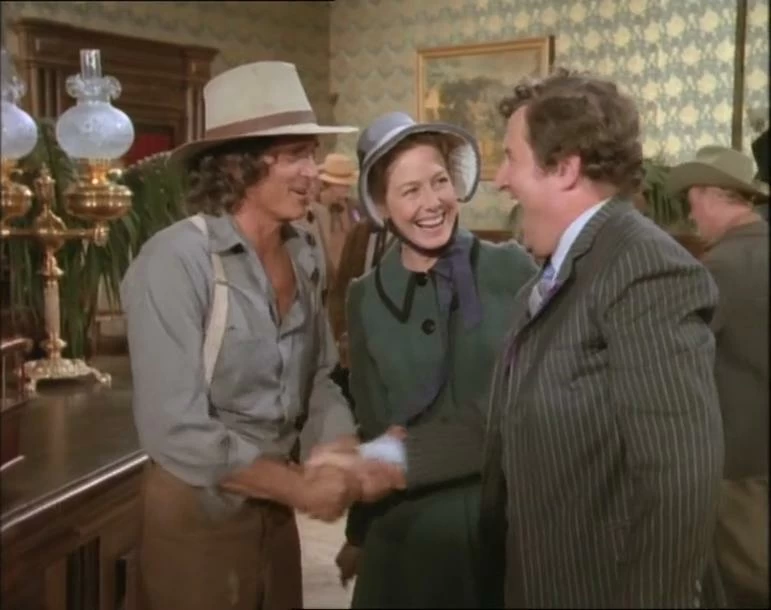
Did Charles and Caroline Ingalls actually go to their high school reunion in real life?
It’s very, very, very, very, very doubtful.
Look, there are a lot of true Laura Ingalls scholars out there who could answer this question better than I – and maybe at some point, they’ll chime in, in the comments section – but it’s pretty unlikely. But because I like to delude myself and believe that the Little House on the Prairie TV series was a completely faithful and completely accurate historical portrayal of the Ingalls family, I will say that there is a .000001% chance that they did.
I don’t know if it’s known if Caroline and Charles were ever classmates at the same school, but it seems probable that they were at the school together, briefly, maybe for a couple years. Caroline moved to Concord, Wisconsin in 1848 when she was nine years old. Charles’s family moved there in 1854, buying property nearby. He would have been around 13. They were next-door neighbors, although living on farms, it wasn't like their houses were 20 feet apart in a suburban type neighborhood like today.
Caroline started teaching at her school in Concord when she was 16. So for starters, Caroline didn’t graduate from a public high school at the age of 18, in the way we would think of today.
And here’s an interesting tidbit that I picked up from Prairie Fires: The American Dreams of Laura Ingalls Wilder by Caroline Fraser. In real life, when Caroline was a school girl, her teacher at the schoolhouse was named Mary J. Moore. So that may be why Caroline and Charles named their daughter, Mary.
If there ever was a high school reunion for the Concord school in 1881, it’s not implausible that it would be held in the big city of Milwaukee, which is only – by car – 35 minutes away.
And in the “Whatever Happened to the Class of ’56?” episode, with it being the 25th anniversary, Little House on the Prairie is suggesting that Caroline and Charles both graduated in 1856. That is, indeed, the time period in which Caroline graduated and started teaching school. Charles was almost four years older, and so he would have been 20 years old then and well out of class.
That said, to be fair to Little House, you do get the sense that this is more Caroline's reunion than Charles's. At least, I got that sense.
Meanwhile, it was common back in 1881 to invite several grades to a reunion instead of just one, so you could argue that it was realistic for the invitation to also be intended for Charles.
Anyway, while Little House on the Prairie does a pretty good job of fictionalizing an event in the Ingalls lives while trying to stay true to what actually happened, it seems unlikely that the real Charles and Caroline Ingalls went back to a 25th high school reunion in Milwaukee if for no other reason than you would think the real Laura Ingalls would have written about it in her books at some point.
But is it possible that a farm wife and farmer in Walnut Grove, Minnesota in 1881 could have received invitation to a Milwaukee-based high school reunion for student of a school in Concord, Wisconsin? Yes. As outlandish as Little House on the Prairie could be when it comes to their American history, scriptwriter John T. Dugan, who sadly isn’t with us any longer, got that right.
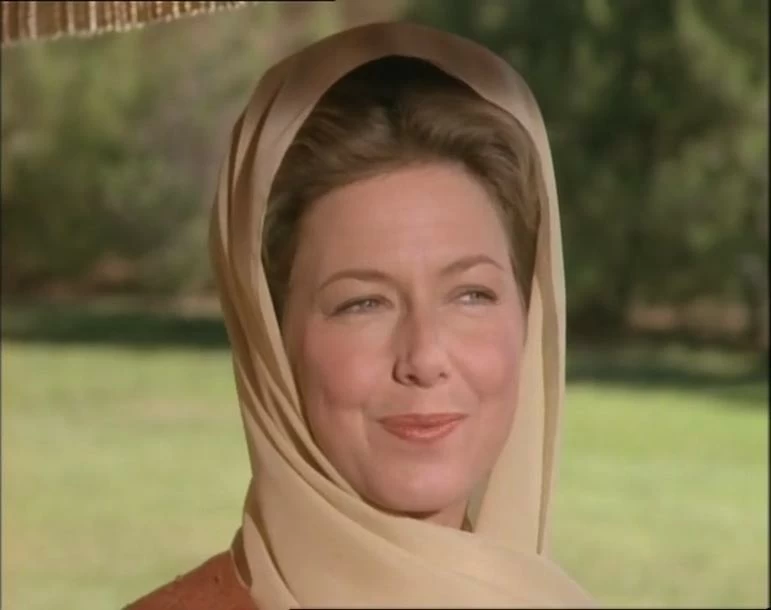
Stray Historical Observations about this Episode
The Grange. So I mentioned earlier that Charles was elected by his fellow townspeople to be sent to the regional Grange convention in Milwaukee. The Grange is a real organization, and it still exists today. It’s official name is the National Grange of the Order of Patrons of Husbandry, though everyone calls it “The Grange” or “The National Grange.”
There are 1,700 chapters across the country. As its website puts it, the Grange is a "nonprofit, nonpartisan, fraternal organization that advocates for rural America and agriculture and brings rural communities together."
The Grange started in 1867, and at first, was only in Minnesota, where the Ingalls lived on the show (yes, in the books, I know they moved on from Walnut Grove), although by 1881, the organization had chapters throughout the country. In a nutshell, these Granger groups would unite to try and combat the railroads and grain elevators (usually owned by the railroads) that were charging farmers crazy high rates for managing and transporting farmers' crops. Just like in the show, and The Grange is mentioned other times in the series.
The episode’s title. “Whatever Happened to the Class of ’56?”, as many of you probably are aware, was a clever callback to the popular 1976 nonfiction book, What Really Happened to the Class of '65? It examined a group of real alumni of a high school. The book became a huge hit and inspired an anthology TV series of the same name on NBC from December 1977 to July 1978, starring, among others, Leslie Nielsen, Jane Curtin, Larry Hagman and Meredith Baxter.
Of course, Little House should have called the title, “What Really Happened to the Class of ’56?” But close enough.
The high school reunion itself. The Ingalls' 25th high school reunion was held in a fancy ballroom at an elegant hotel, and that, too, the producers got right. High school reunions back then were pretty posh affairs, often being held in fancy venues, and there was usually entertainment, with piano solos and singing and class poems and readings. Sometimes the mayor was even invited to these events, as was the case in 1879 when the high school in Oshkosh, Wisconsin held a reunion.
At the high school reunion Caroline and Charles attended, guests were drinking champagne in a room full of chandeliers and oil paintings. There was an eight-man orchestra playing music. It was quite a to-do.
Unfortunately, the newspapers don’t seem to have written about any Concord high school reunion being held in Milwaukee in 1881, but I may have just not uncovered anything yet. Or maybe it was a busy news day, and there was no time to send over a reporter to report on the reunion. If they had sent one over, maybe they would have written about one Charles Ingalls dancing with his wife, Caroline, and then slugging the wealthy businessman, Mr. Dillon Hyde.
Where you can watch Little House on the Prairie (at the time of this writing): You can find the entire series on PeacockTV.com, for free (you’ll have to watch a few ads but not many). You can also find it on the cable channel, Hallmark Movies & Mysteries, even though the TV series was neither a movie nor a mystery show.
Articles similar to this one: Well, if you like the randomness of reading about the history of high school reunions, maybe you’d like to read about the history of answering machines by way of The Rockford Files? Or the history of water towers by way of Cimmaron Strip?

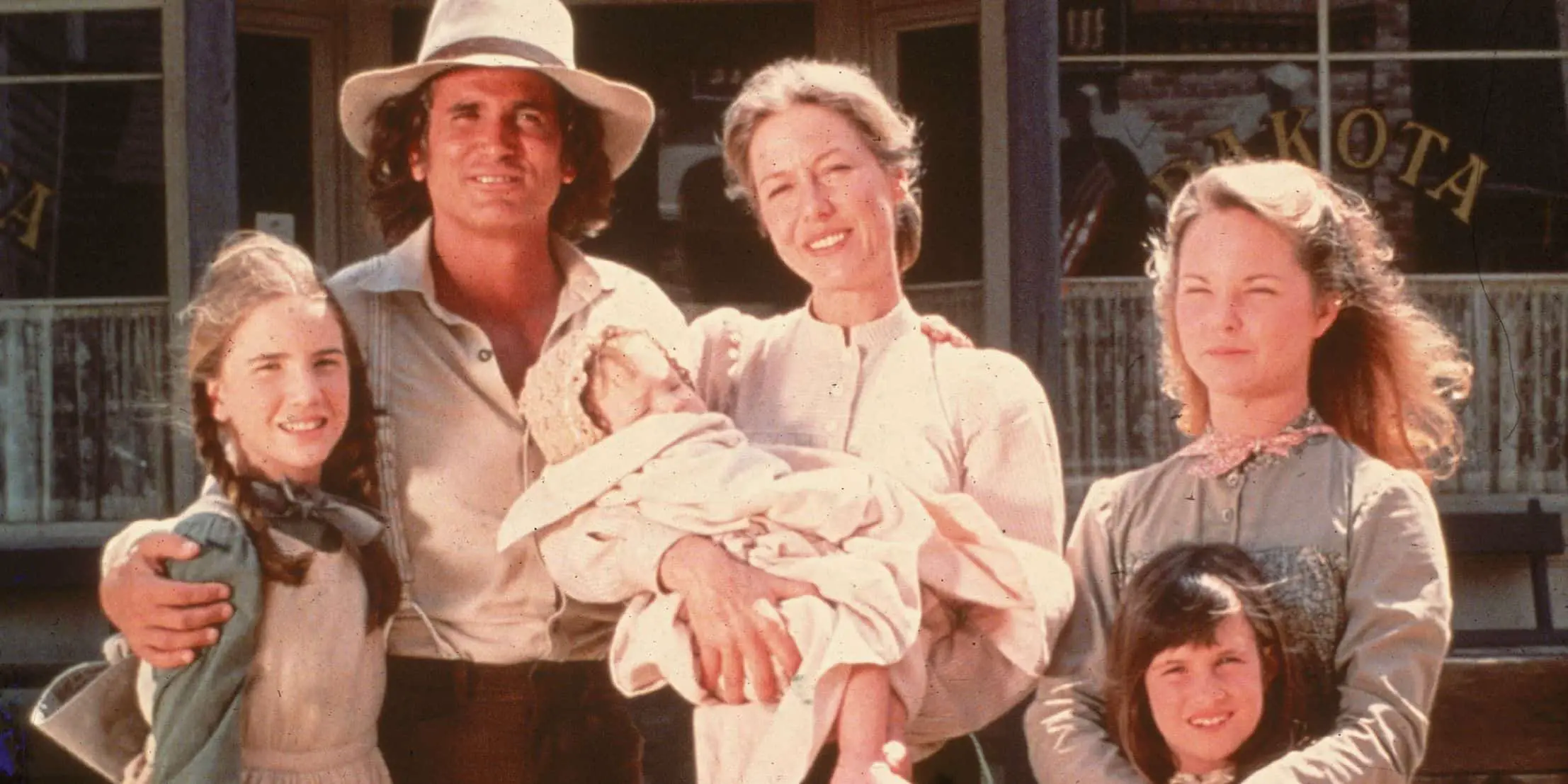
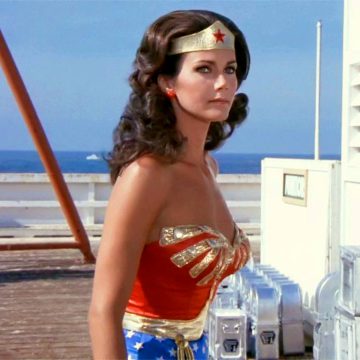
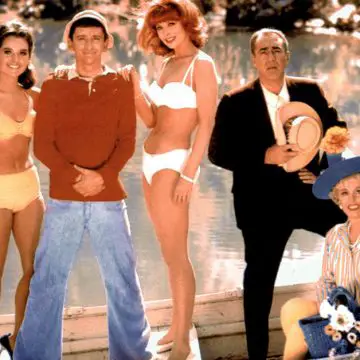
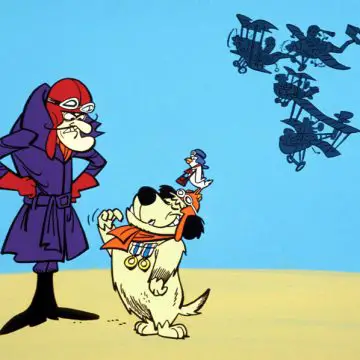

Sue
In 1881, the Ingalls family was living in South Dakota and that was also the year of the hard winter. There was no reunion trip. They did, however, take Mary to Iowa to the blind school in Vinton and later there were trips to Chicago for Mary's health problems, but as far as we know, there was never a return trip to Wisconsin.
Now, the Little House cast does have reunions. For the big anniversary years, a number of cast members gather in Walnut Grove during a pagent weekend. And there are informal gatherings too. "Nellie" and "Almanzo" were in DeSmet last weekend.
The TV Professor
Thanks, Sue! Very interesting. And, as you said, "as far as we know." 🙂 Maybe the Ingalls made their way to their high school reunion after the hard winter, during the the not-as-tough summer... I mean, the scriptwriter, Michael Landon and the rest of the producers couldn't possibly have gotten this wrong (I enjoy deluding myself when it comes to "Little House on the Prairie").